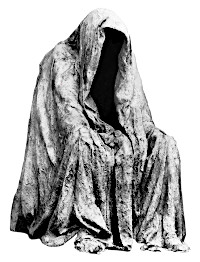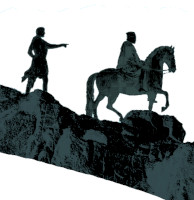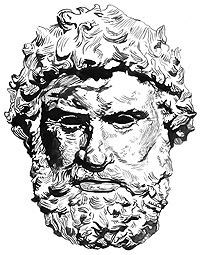Chapter 12
Sparta, The Pelanors, Wealth, And Women
Pelanors were the iron bars quenched in vinegar so they would have no value, that were the symbolic internal state reserve of Sparta, a nation which had iron mines. Historians scoff at this, on the dole as they are. Sparta had been a wealth money state during Homer’s time, in the 700s B.C. By the 600s it was in crisis like the rest of the Greek states, having been lured into the international banking web. Astle makes clear suppositions based on solid evidence that the Greco-Persian Wars, were instigated by the Babylonian money machine, those enemies of mankind who elevated and got rid of Persian emperors and lesser kings. The silver mines in Athens and Macedon made these places targets for the empire, which was in fact a grasping shell that fed its inner mind, the money men.
Sparta and Athens would rise as small imperial powers through their struggles against Persia, and were then ruined in the Civil War from 430 to 401.
Astle uses Plutarch, Aristotle and Polybius to sketch that rarest of civilized ethnic states, Sparta. The precious wealth of Sparta was the quality of its men in battle and its women in civics. The state was not “totalitarian” as history teachers taught in America from the 50s to the 80s. Every man had a vote. Woman had a voice and more control of property than other Greek states. There were two kings, who, if they misbehaved could, and would be, killed, Like Pausanius, who was slain for greed, for involving himself in money.
The Spartans, who were in fact The Men of the Silent Land, whose capital was Sparta, or “Rope,” ate at military messes for free. Only athletic champions ate for free at messes in most cities. The council of five Ephors were less corrupt than most oligarchies. In fact, Lacadaemon was at once a monarchy, an oligarchy, and an ethnic democracy. This state maintained its freedom for 200 hundred years after the reforms of Lycurgus, who forbade precious metal money within the state, and reserved this for dealings outside of the state.
The Spartan money was made of leather notes based on the symbolic iron hoard. Romans seem to have developed their coinage out of leather as well. From about 610 to 500 B.C., when Sparta was at her height, there is evidence that imports virtually halted. The nation had its land, its men, its women, of remarkable character, and were admired by other Greeks as the most pious and most disciplined.
The Treaty of Miletus in 412 B.C. in which Sparta was loaned 5,000 talents to build ships against Athens, placed that insular nation in an imperial seat for which its civic temper was not well suited. With many of the Spartan men dead, strangers were accepted, men had to pay money to eat at the mess, and the women took a leading role in the culture thru the promotion of luxury.
By 371 the Spartans were defeated by the Thebans. By 360 “the crime of Gylipus” that money should be banned for internal use in Sparta, was voted down. Thus the basis for the Spartan strength was taken away. Some victories would come, but mostly disaster and infamy. There would be some high points, such as when Xantippus the Spartan destroyed the army of Regulus which menaced Carthage in 255 B.C. But by 228-19, and the reign of King Cleomenes, a Spartan who was broke had to yield his place to any man with money, slave or alien. The once greatest foot soldiers in the world were reduced to homelessness and starvation in their own nation, as foreign merchants took the places of honor. These disenfranchised Spartans were called the hypomeiones.
Sparta had once thrown off the international yoke of greed. One can only wonder, did the banking interests promote the Greco Persian Wars? Did they promote the Peloponnesian War, that ruinous 30 year Greek Civil War? It is curious that in 336 B.C., Alexander left the Spartans alone, when they refused to join the expedition against the Persians. He left them in his rear, the most storied warrior nation in Hellas, now the puppets of Persia and the bankers that paid for Spartan loyalty. He essentially crushed the Spartans by cutting off their Asiatic subsidies. His Macedonian garrison would crush the Greek rebels after his death.
I have here summarized Astle’s lengthy case for the conspiratorial decline of Sparta, adding a few facts from ancient readings. Below I would like to honor his lyric style with some of his more compelling passages.
Concerning a 19th century historian:
“Though over two thousand years had gone by, precious metal money and its promoters still ruled, despite a dozen great kingdoms and empires having risen at its behest and having fallen at its behest… Did Babelon see the shadow that lurked behind the throne, he closed his eyes and turned his head away…!”
“… wealth however designated, passed substantially into the hands of women. Concern for the growth of money, no doubt, just as in this day, replaced care for their men, and concern for themselves as mothers of the race, and concern for the growth of their children.”
The spartan women became whores.
“Such women, their heads full of figures and pride, would have served most usefully those alien money powers who ever have sought to further their purposes through corrupt and malleable persons… Women, rarely corrupt in the sense that a man may be corrupt, because of their natural need to shelter behind what seems to be strength, as arrogant Money Power would appear to them, are malleable… Their own Spartan men, either dead, and if not dead, completely confused with the new liberalization programme of the returned bankers, were virtually enslaved; therefore they turned for the protection they needed to what seemed to be the new strength, pudgy and gross though it may have been…”
Forgive the man’s many ellipses.











